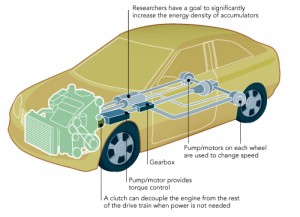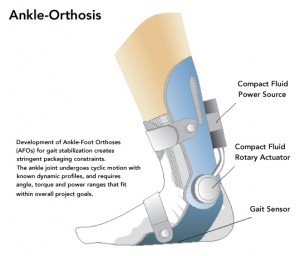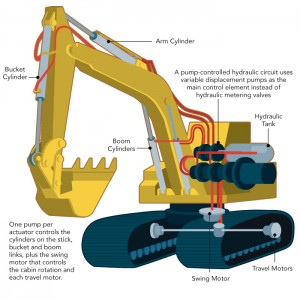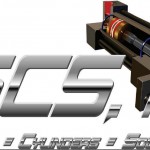Through the Center for Compact and Efficient Fluid Power, a research consortium sponsored by the National Science Foundation, university teams, along with their industrial counterparts, are working on new technologies that will significantly advance the state-of-the-art in fluid power. Here is a look at four significant initiatives.
Hydraulic Hybrid Passenger Vehicle
 |
Researchers at the University of Minnesota are working on a novel architecture for a hydraulic hybrid passenger vehicle with a hydro-mechanical drive. The drive combines pump/motors at each wheel with differentials and a mechanical driveshaft to provide uninterrupted power flow over the entire speed range of the vehicle.
“We decided to study this architecture because of its potential to be more energy efficient than the series and parallel hydraulic hybrid architectures,” says Perry Li, a professor at the University of Minnesota and leader of the test bed.
A hydro-mechanical transmission (HMT) could potentially combine the advantages of both series and parallel hybrids. A unique aspect of the hydro-mechanical design is a feature called “power split,” which involves decoupling engine operation from vehicle speed and allowing partial power to go through the mechanical drive. The power from the main drive shaft is combined with the power from the pump/motors and planetary differentials on the wheels to drive the vehicle. When power isn’t needed, a pump/motor mounted in parallel with the engine and a clutch make it possible to de-clutch the engine from the rest of the drive train.
A pump/motor in the front of the vehicle adds torque to the system and pump/motors on each wheel are used to change speed, resulting in flexible engine operation. Simulations show that with an engine peak efficiency of 39 percent, an HMT system can deliver on the order of 100 mpg in the urban cycle and approximately 70 mpg in the highway cycle. For the series hydraulic hybrid to approach this level of efficiency, the pump/motors need to be 90 percent efficient.
“One potential advantage of the HMT architecture is that it allows you to use independent wheel torque control to control vehicle dynamics more aggressively,” says Li. “That would be a plus, particularly in the face of requirements for safety and great vehicle stability.”
Understanding and mastering the HMT controls architecture are the primary challenges. With the first vehicle prototype, for example, it has been difficult to find components that are the right size. Some components are not efficient, and the ideal size of the pump/motors is much smaller than commercially available parts.
Packaging is also a challenge. The first prototype uses discrete components, but an integrated assembly is the goal. For the second-generation prototype, the design team is partnering with a company that makes hydraulic continuously variable transmissions.
The third challenge, as with all hydraulic hybrids, is the accumulator. Research is currently underway to significantly increase the energy density of the technology. One approach could increase density two to three times; another approach could potentially increase energy density by 10 times, but neither is a proven technology.
Pump-Controlled Hydraulic Excavator
 |
Researchers at Purdue University are working on a pump-controlled hydraulic circuit that uses variable displacement pumps as the main control element instead of hydraulic valves to power an excavator. The design is very simple, with one pump per actuator to control the cylinders on the stick, bucket and boom links; the swing motor that controls the cabin rotation; and each travel motor.
The variable displacement pumps serve as both the power supply and flow control for the actuators. Pump flow rates are controlled electro-hydraulically by adjusting the pump displacement. The excavator arm is instrumented with position sensors for feedback control. The controller coordinates the actuator motions, allowing the operator to command the bucket trajectory directly for level trenching and vertical lifting.
Elimination of the control valves makes the biggest impact on the new excavator’s energy efficiency. The architecture also allows recovery of kinetic and potential energy because the pumps can operate as motors. In all, these efficiency improvements add up to a 50 percent fuel savings for a typical duty cycle.
One technical challenge for the test bed is coming up with the sophisticated engine power management scheme that will be required to adjust the engine speed for efficient operation. Engine power management is a familiar feature in hybrid cars, but has seen only limited application in off-road machinery. The system needs high bandwidth at the actuators, but the engine can’t respond as quickly to changes in speeds. Dynamic loads change much more quickly than with a passenger vehicle, so shaking mud from the bucket, for example, requires a very fast response.
Rescue Robot and Human Orthosis
 |
The Rescue Robot and Human Orthosis test beds represent a class of compact, human-scale fluid power applications. A primary goal of the research is to develop compact sources of fluid power that can be used in untethered devices that operate in the 10-100W range, such as a rescue robot and orthosis device. The ultimate goal of researchers is to create a fluid power supply that is up to 10 times more compact than alternative solutions.
Researchers are exploring the concept of chemofluidic actuation, which uses high-concentrate hydrogen peroxide and a catalyst to create a chemical reaction. The resultant hot gas product can either be used directly as a source of pneumatic power or to drive a vane motor in order to create rotational shaft power. By mounting a hydraulic pump directly onto the end of the motor shaft, a compact source of hydraulic power is created. This unique approach is exciting because although compact pumps already exist today, the power sources available to drive them (typically an IC engine or electric motor) are significantly larger than the pump itself. Researchers hope to develop a pump/motor capable of delivering continuous power in excess of 1,000 W/kg, which is approximately five times better than state-of-the-art, rare-earth magnet brushless electric motors.
A second type of compact fluid power source under development is a free piston engine (FPE). With most engines, a fuel and air mixture is ignited and pushes down on the piston connected to a crankshaft to create rotary motion. A hydraulic pump is mounted on the shaft to create fluid power for the vehicle. Thus the fuel and air mixture is ultimately converted into flow of oil.
The center’s concept of a free piston engine compressor or pump attempts to simplify this conversion: The fuel and air mixture is ignited on one side of the piston with a pump or compressor creating fluid power on the other side. Since no rotary shaft is required, the resultant source of power is much smaller. The center’s first FPE designs are pneumatic. LP gas is used as the energy source to create high-pressure air that is stored directly into an accumulator, which can then be supplied to the actuators as needed.
The center is also working with a major automotive OEM on a free piston engine pump that supplies high-pressure oil instead of air, and is much more compact than existing power trains. The target application is half-ton and larger-size pickup trucks.
Advertisement:





